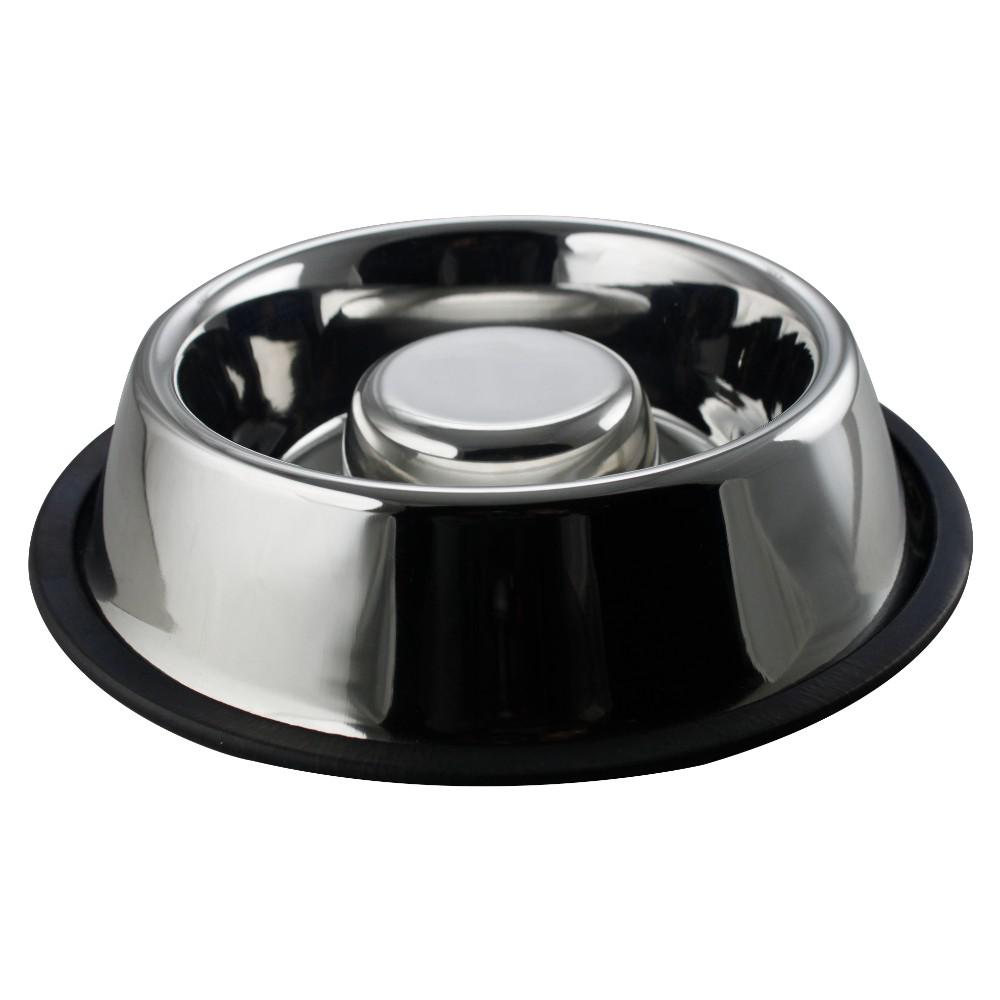
Puppy Care Guide
Congratulations on your new family member!
Bringing home a new puppy is both exciting and overwhelming, so we put together all the need-to-knows for your first year of puppy parenting.
First things first: Make your home safe!
- Hide electrical wires
- Is there anywhere in your home a puppy could get stuck or fall?
- Clean up small items (rubber bands, pens, pencils, needles, hair bands, etc.)
- Get used to closing trash can lids, toilet seats, and doors to off-limits areas
- Check your yard. Are there any holes or gaps in your fence?
Beware Poisonous Substances
- Lock up pesticides, rat killer, medications, and any other toxic household substances
- Make sure any indoor plants are out of their reach
- Save the number for ASPCA Poison Control to your phone: 1-800-548-2423
Know the closest 24 hour Emergency Clinic
You never know when there will be an emergency. Save the clinic’s
We recommend taking your pet to one of the following emergency clinics:
IndyVet Emergency & Specialty Hospital
5425 Victory Dr
Indianapolis, IN 46203
317-782-4484
indyvet.com
Veterinary Specialty & Emergency Care South
4625 East Stop 11 Road
Indianapolis, IN 46237
317-534-6000
vsecindy.com/south
VCA Advanced Veterinary Care Center
7712 Crosspoint Commons
Fishers, IN, 46038
317-578-4100
vcahospitals.com/advanced-veterinary-care-center
Basic Equipment Needed
It’s fun to get cute new things for your newest addition, but it can also be very expensive! Keep this in mind before committing to a new dog.

Food + Water Bowls
- Stainless steel bowls are durable and do not rust, break, or chip.
- If you have a puppy that eats their food too fast, try a slow feeder or puzzle bowl.
- Eating food too fast can cause them to choke, vomit, or have life threatening gastrointestinal issues.
Collar + Leash
- Always keep a collar with tags on your pet.
- Martingale-style collars prevent your dog from slipping out of their collar and is safer than a choke collar.
- If your puppy pulls on walks, use a harness with a leash clipped to the front or try a gentle leader.
- Most cities have laws requiring your dog to be leashed. For the safety of your pet and others around you, use a short leash when you’re not on your own property.
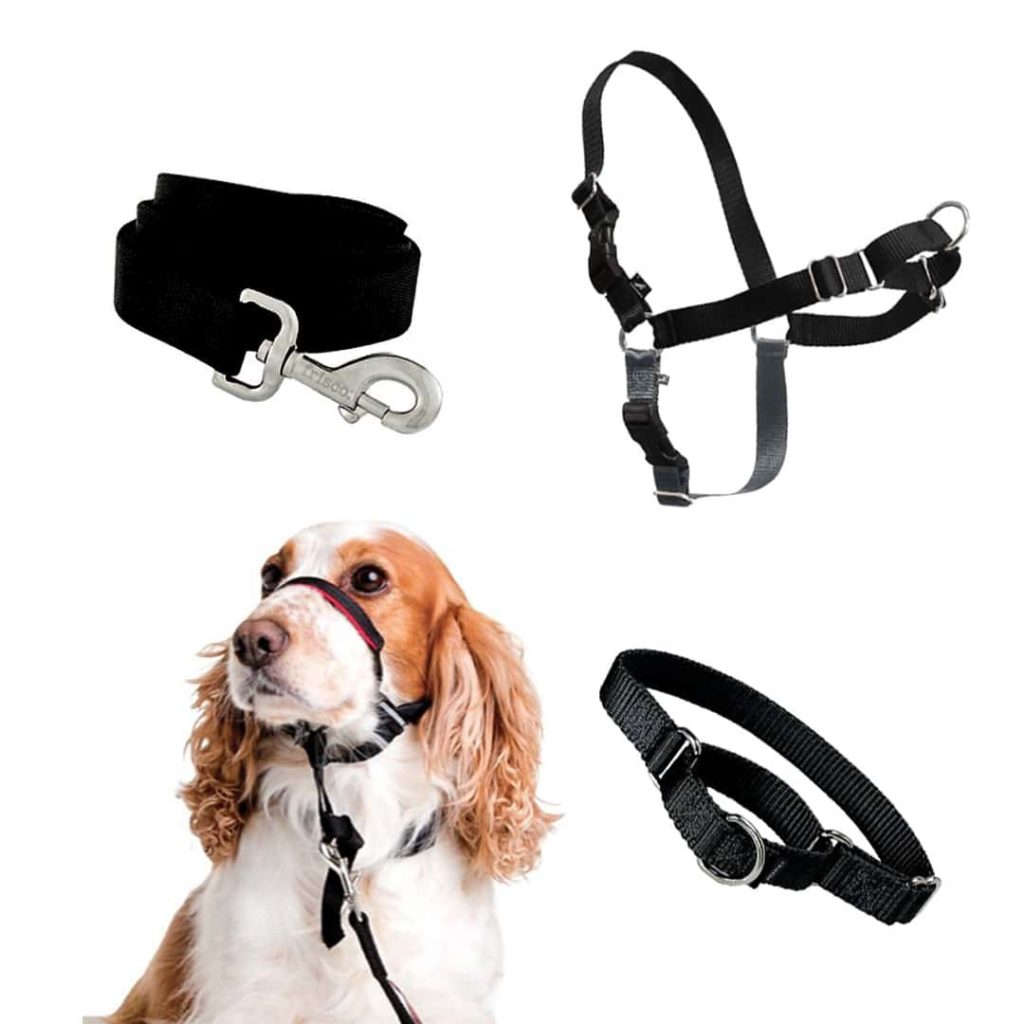
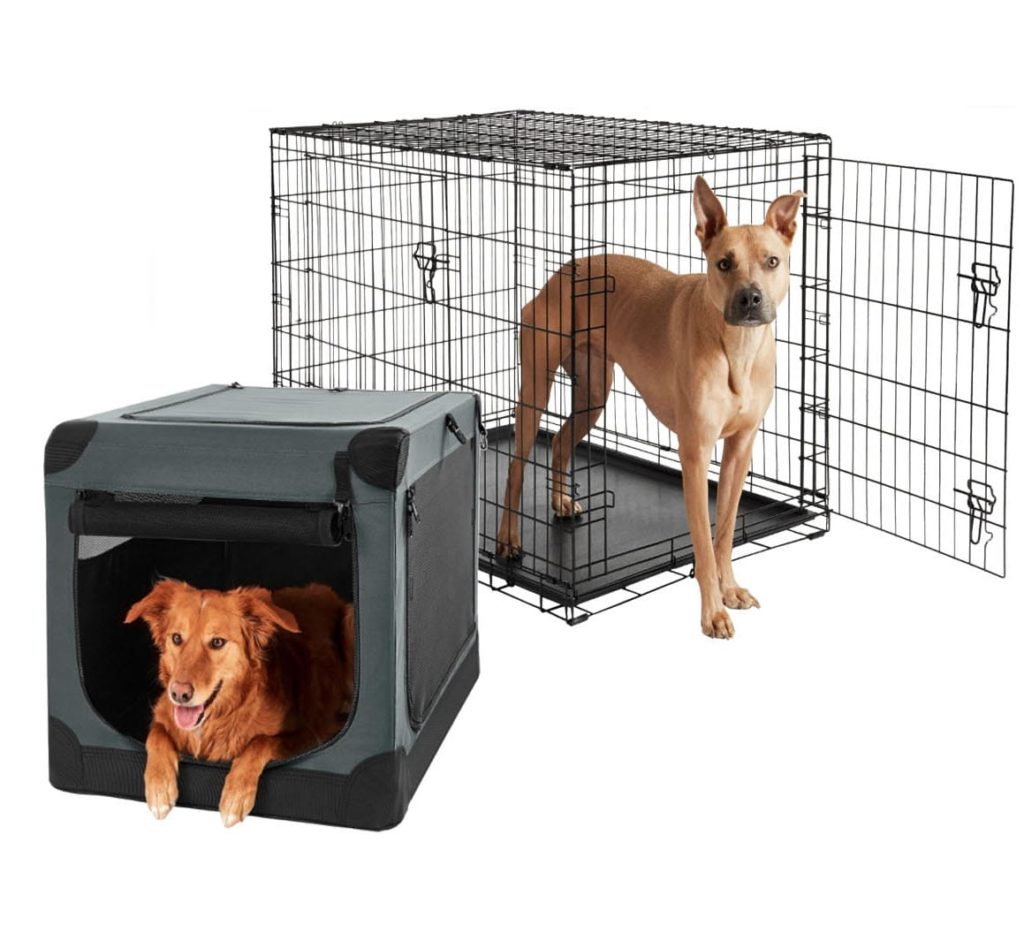
Crate / Kennel
- A dog crate isn’t a prison. Some pets actually enjoy having a safe space of their own.
- Having a crate is useful for teaching your new puppy boundaries and good behavior. It gives you a safe way to keep them out of things when they’re unsupervised.
- Find a crate that you can section off as your puppy grows. Puppies may have a hard time being crate trained, because they’ll potty in one corner and sleep in another when their crate is too large.
- A crate with soft sides may be more comfortable. You can also add bedding and blankets to the inside, or cover the crate with a sheet for privacy.
Grooming Tools
- Brushing is essential to keeping your pet’s coat healthy and beautiful. We recommend twice weekly brushing for our long-coated friends.
- If you find that you don’t have the time to brush your pet, more frequent grooming visits may be needed.
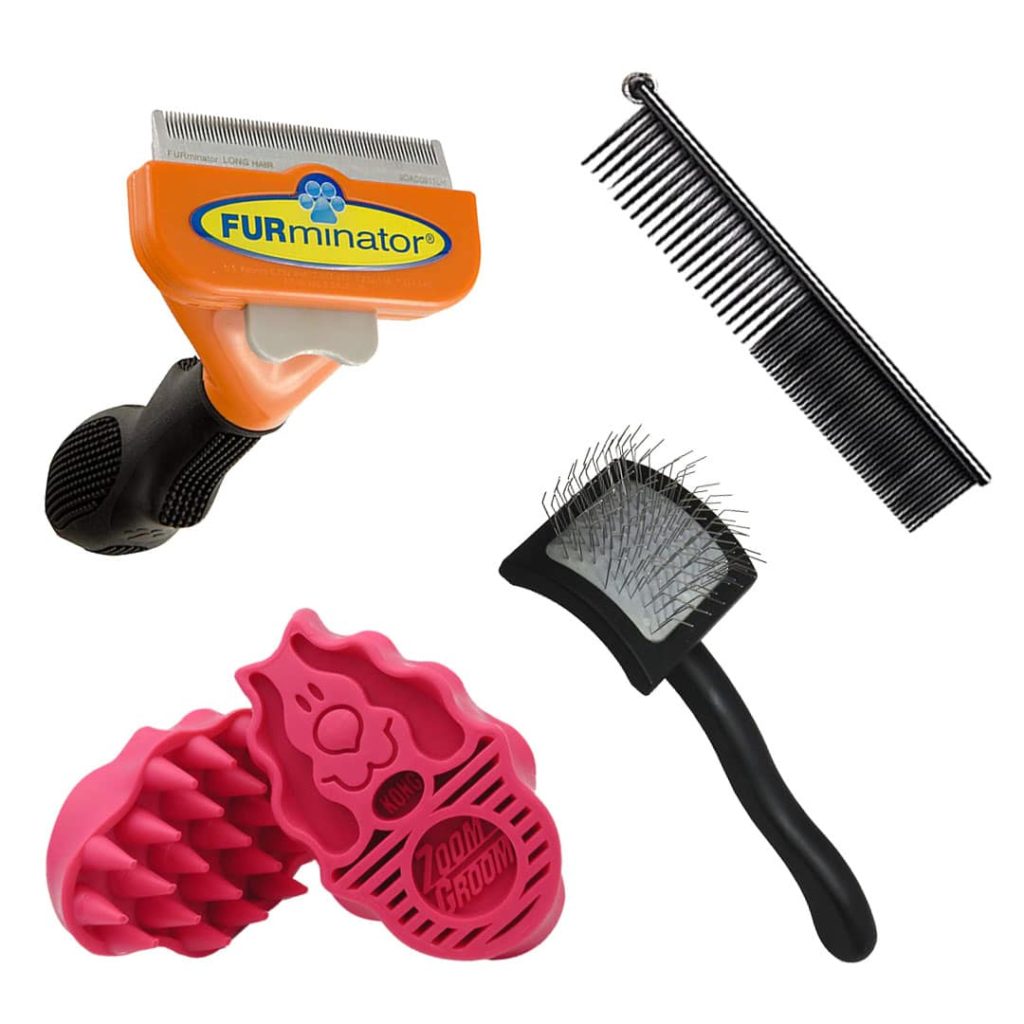
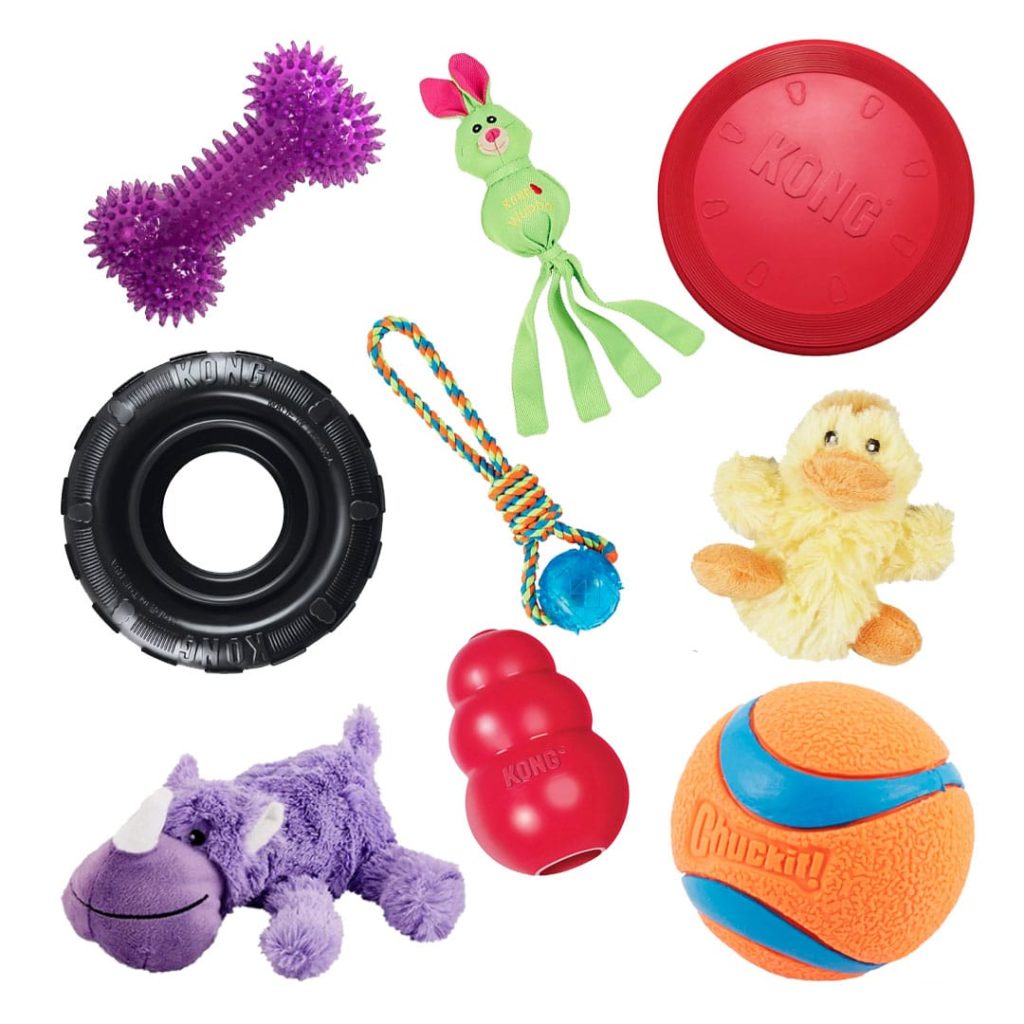
Toys
- Rubber toys, like Kong brand toys, are almost indestructible and can last a long time.
- Balls, squeaky toys, and plush toys are fun to play with but can easily be torn into pieces. It’s always a good idea to watch your pet when they play with these products.
- Don’t keep toys out all the time. By rotating which toys are available to play with, your puppy won’t get bored with them.
- Antlers and bones are hard and can easily chip a tooth. Rawhides can be torn up and choked on. Be carful with these products.
Gates
- Give your puppy a special place to hang out, close to where you spend most of your time. Block it off with gates.
- It may take months to be able to let your puppy roam the house unsupervised. This will prevent many housebreaking and chewing accidents.
- Only let your puppy explore your home under supervision. If you need to leave or can’t watch the puppy in their area, crate them. Reinforcing good behavior often means preventing bad behavior.
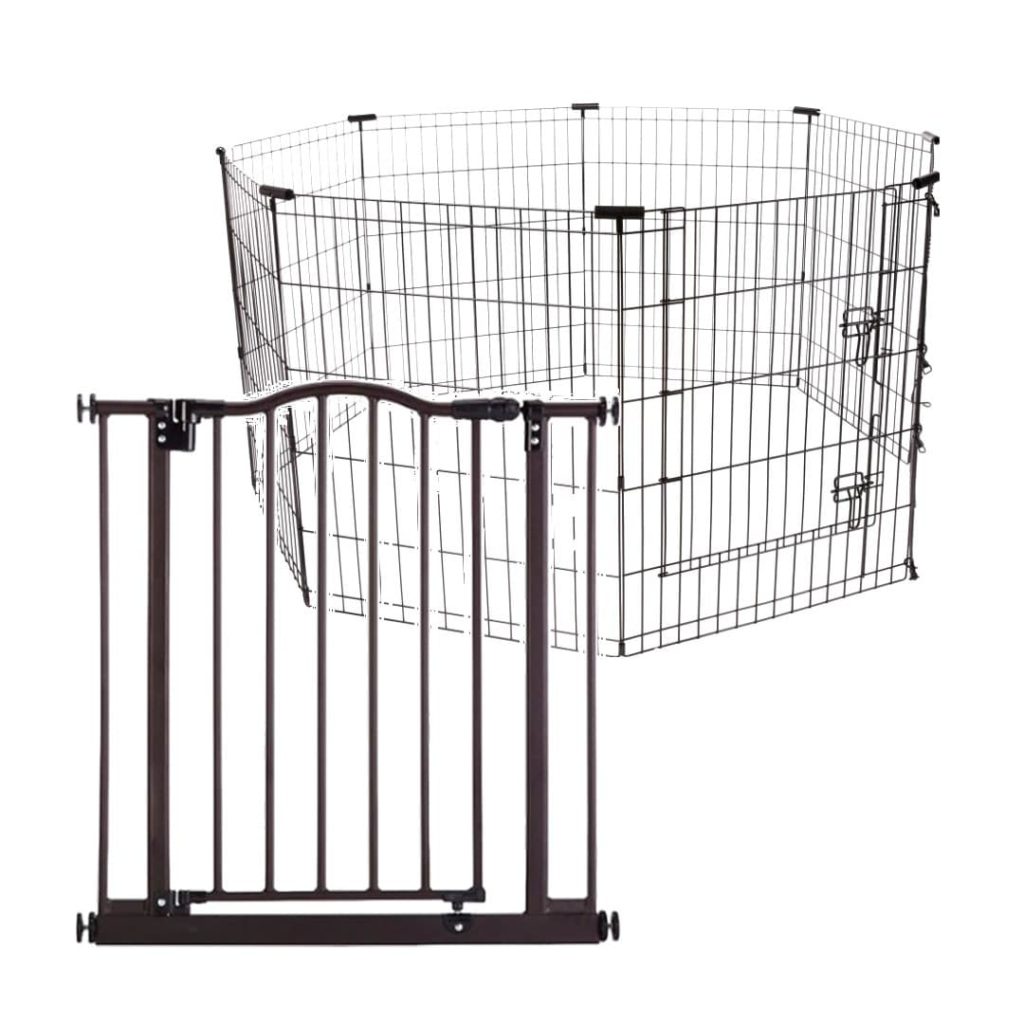
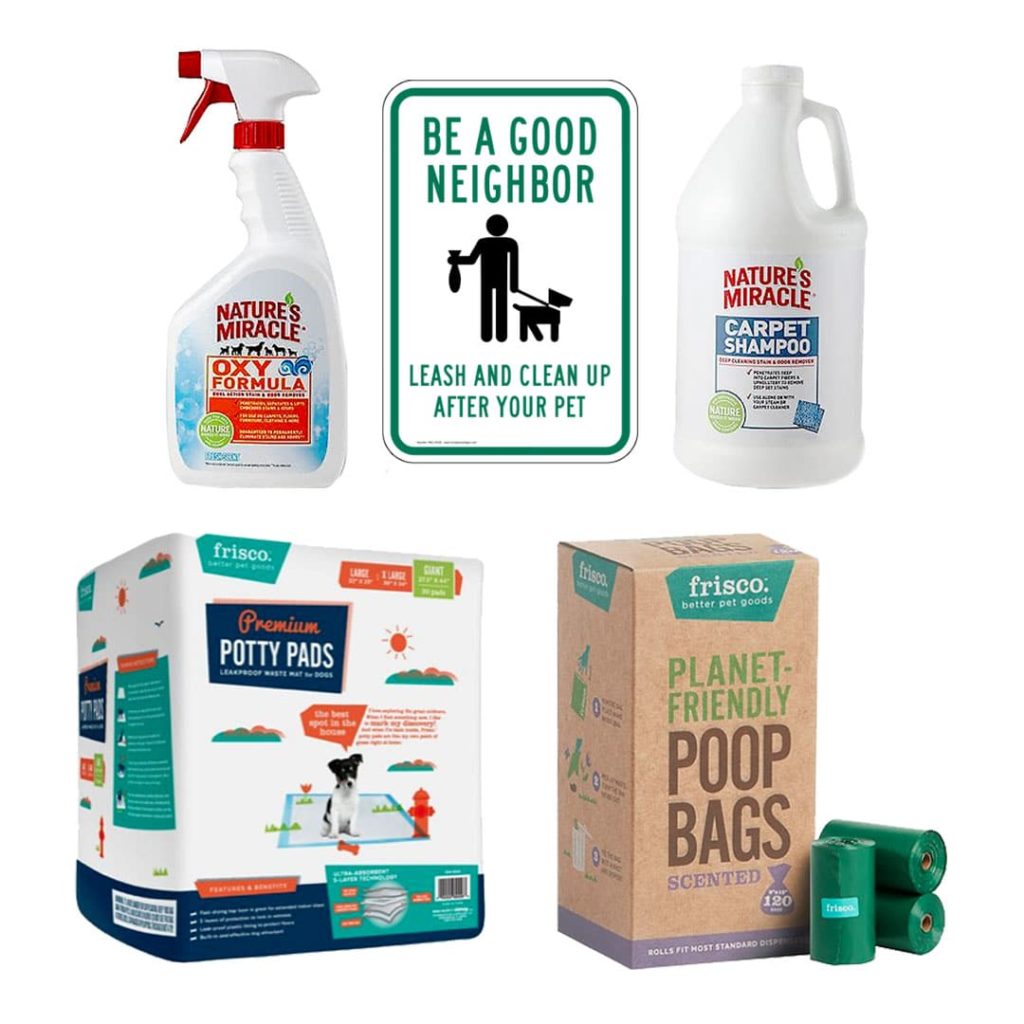
Sanitation
- This is the part of puppyhood that is not so glamourous. You are responsible for keeping a clean bathroom experience at your home and in public places.
- Always pick up your pet’s poop. It keeps disease and parasites from spreading to other animals and reinfecting your pet.
- Be prepared with training potty pads and carpet cleaner while your new puppy learns potty training.
First Impressions are Important
While this is an exciting time for you, this can be an overwhelming experience for a new puppy. Leaving the security of their mother, puppies experience a multitude of new sounds, smells, and sights.
Introductions to other household pets is an important step that should always be completely supervised.
In most cases, this should take place gradually and acne drug gently. Be cautious. An older dog may have a difficult time adjusting to a new family member. They may bark, growl, or even try to hurt the puppy.
Begin introductions in a neutral area outside, not in the home. This way, the resident dog won’t be so protective and there is more space for both dogs to get away. Make sure both dogs are leashed and can be controlled. Don’t yell at the older dog if they don’t react perfectly. It may take time and patience. Allow the older dog to correct the puppy by growling when the pup needs to learn boundaries.
Rules for Children
Children tend to smother the new arrival antibiotic drug with attention. You should explain to your children when the puppy has had enough and that it’s not a toy. Explain that they shouldn’t rush at the puppy, try to pick it up, or make too many loud noise, and while sitting on the floor, the puppy will probably climb on them. It’s best not to allow them to play with the puppy when you are not present to avoid mishandling or injury.
Training + Behavior
Crate Training
It is normal for your puppy to cry at night for about a week. You can try keeping your puppy crated at night next to your bed. Once this becomes normal, you can start to move their crate further away from where you sleep and towards the area you would like their crate to be permanently.
Don’t reward crying behavior with attention if you can help it. We know how hard it is to ignore a cute puppy, but being consistent with managing inappropriate behavior at an early age is important. Make sure they aren’t crying because they have to go to the bathroom or you’ll be cleaning up urine and bathing the puppy at 3 a.m.
Potty Training
Until the puppy is three to four months old, they have little bowel or bladder control. Following these tips can limit the number of potty-training accidents:
- Most accidents happen by allowing too much freedom, too soon. Confine the puppy to one or two rooms where you spend the most time.
- When you can’t supervise the puppy, crate them.
- Have regularly scheduled feeding times.
- Take your puppy outside to go to the bathroom often. First thing in the morning, after naps and meals, and before you go to bed are all good times to start with.
- Go outside with your puppy while they use the bathroom so you can keep tabs on healthy bowel movements and stool. Give them immediate praise when they go potty outside.
- Never punish or reprimand a puppy that goes to the bathroom inside. Instead, find ways to prevent your puppy from having the need to eliminate indoors.
- Most puppies will not learn to signal their need to go to the bathroom until they learn how to “hold it” in the house. Take them out on a regular schedule.
Basic Commands
- Repetition, patience, and positive reenforcement are necessary for training.
- Practice with your pup outside and throughout the home.
- Use treats and be consistent with the commands you use. Eventually, your puppy will learn to associate the treat with the command.
- Don’t give your pet old socks or shoes as toys, as they won’t be able to tell the difference between their toys and your belongings in the future.
- Use a release command, like “go ahead” or “free dog”. This way, your dog will understand that once it sits, it should stay sitting. And once it lays down, it stays down until you “release” them.
- Walk them often and begin to teach them manners. Don’t let them pull on the leash, approach strangers or other animals, or pee in inappropriate places (like someone’s car or leg).
Health + Wellness
An initial check-up for your puppy is important. Puppies are susceptible to illness and disease, and can be exposed to a lot of different animals and places before finding you.
Recommended Core Vaccines
Vaccines are an important part of preventative health. After the initial vaccine, a booster shot may be necessary to complete your pet’s immunization to a disease.
- 3-5 Distemper/Adenovirus/Parainfluenza/Parvoviral vaccines (can be vaccinated by 6 weeks of age)
- 1 Bordetella vaccine (can be vaccinated by 3 weeks of age)
- 1 Rabies vaccine (can be vaccinated by 3 months of age)
Elective Vaccines
While these aren’t considered core vaccines, they can be equally as important. Your veterinary technician can recommend which of these are a good choice for your pet based on their lifestyle and environmental risk.
- Leptospirosis Vaccine (can be vaccinated by 8 weeks of age, booster shots are required until they are 12 weeks of age or older)
- Lyme Vaccine (booster shot required to complete immunization)
- Influenza Vaccine (can be vaccinated by 7 weeks of age)
Intestinal Parasite Testing + Control
- 2 Stool Samples for Parasite Evaluation
- 2 Oral De-wormings (can begin as early as _ weeks of age)
- Parasite Prevention (safe to use by _ weeks of age)
Read our blog to learn more about common parasites, how they’re spread, and the treatments
Spay / Neuter
We recommend your puppy to be sterilized by 9 months of age. Ask our team for more details regarding your pet’s spay or neuter during your next appointment!
- Early neutering will not affect their growth but may affect their weight. Spaying and neutering your pet will not make them overweight.
- Neutering helps to prevent testicular cancer and prostate issues.
- Spaying helps to prevent uterine infections, breast tumors, and their heat cycle.
- Behavioral issues are less likely to develop with sterile pets. (i.e. mounting, inappropriate urination, running away, and aggression)
Microchipping Your Pet
Your pet is more likely to find its way back to you with a registered microchip. The median return to owner rates for the shelters were 2.4 times higher for dogs with a microchip than all stray dogs (52.2% vs. 21.9%).
Microchipping your dog is one of the best things a pet owner can do for their pet. Read our blog to learn more about what a microchip is, why it’s important, how much it costs, and the likelihood of adverse reactions.
Growth + Nutrition
Small Breed Dogs (weigh up to 20 lbs. at adulthood)
- Birthweight increases by 20 times
- Higher energy needs than larger dogs
- Can be fussy eaters with lively, energetic personalities
- Life Expectancy: Generally 14 – 16 years
- Examples include the Chihuahua, Dachshund, Miniature Schnauzer, Shih Tzu, and Yorkshire Terrier
Medium Breed Dogs (weigh 21 – 55 lbs. at adulthood)
- Birthweight increases 40 to 50 times
- Historically, medium sized dogs were bred for their energy and physical ability to work outdoors
- Today, these dogs have adapted to a wide variety of lifestyles
- Life Expectancy: Generally 10 – 12 years
- Examples include the Basset Hound, Bulldog, Cocker Spaniel, and Standard Schnauzer
Large Breed Dogs (weight 56 – 100 lbs. at adulthood)
- Birthweight increases 70 – 90 times
- These dogs are faithful, affectionate, and make ideal pets
- The growth period for large dogs is 15 months, almost seven months longer than small breed dogs
- Life Expectancy: Generally 9 – 12 years
- Examples include the Boxer, German Shepherd, Golden Retriever, and German Shorthaired Pointer
Giant Breed Dogs (weigh over 100 lbs. at adulthood)
- Birthweight increases by 80 to 100 times
- Their growth period is 18 – 24 months, during which time they should be monitored carefully to prevent bone or muscle injury
- Stock in joint supplement products might be a good idea
- Life Expectancy: 9 – 12 years
- Examples include the Great Dane, Mastiff, Rottweiler, and St. Bernard
Grooming
If your dog has long hair, a grooming spa may be necessary. Acclimating them to regular grooming visits is best done at a young age. By bringing them in regularly as a puppy, they’re less likely to have anxiety about the grooming spa as an adult. We offer a wide range of grooming, spa, and wellness services at Furr: Pet Spa and Wellness. Call to get your puppy started on the right track!
The duration of time between professional grooming appointments varies greatly between pets. Your groomer can recommend what is appropriate for your pet.
Nail Trims
Clipping your puppies nails early and often will make nail trims easier in the future. Make sure you ask your veterinarian which part of the nail you can cut without causing pain if you are not familiar. You can also use a dremel to get a closer, rounded nail trim.
Bathing
Keeping your pet well-groomed helps keep them comfortable, clean, and healthy. Bath time can be used as a regular tool to stay aware of your pet’s health and body. Regular grooming can help keep track of any lumps, bumps, and injuries, while eliminating mats and parasites. Dog acne, skin allergies, and tear staining are all issues that can be helped with a regular bathing routine.
Read our blog to learn more about how to bathe your dog!
Teeth
Begin dental care early! Preventative dental care will save you money in the future, and your pup will thank you for the infrequent teeth cleaning visits. Dental treats, greenies, water additive, and teeth brushing are all ways to prevent dental disease early. Our clinics offer a range of products
to make this easier for you.
Get in touch
Business Hours
Monday
8:00am - 5:00pm
Tuesday
8:00am - 5:00pm
Wednesday
8:00am - 5:00pm
Thursday
8:00am - 5:00pm
Friday
8:00am - 5:00pm
Saturday
8:00am - 5:00pm
Sunday
Closed
© Copyright 2024 - Indianapolis Vet - City Way Animal Clinics . Sitemap | Privacy Policy
